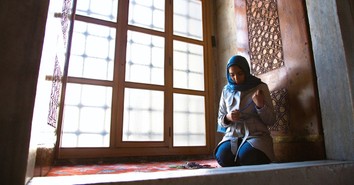Devotionals

How Can We Deepen Our Intimacy with Christ? - The Crosswalk Devotional - July 2
When we remember that He sees our pain, every injustice we experience, and promises to reward our every obedient act, we feel less compelled to...

A Prayer for Peace When the World Feels Chaotic - Your Daily Prayer - July 2
You don’t have to be overcome by today’s chaos. Let this quiet, Scripture-filled prayer steady your spirit and remind you where peace is found.

Let Your Love Speak with Wisdom - Your Nightly Prayer - July 1st
When love overflows with wisdom and truth, it transforms hearts like a holy eruption.

Plus
Be Grateful for Your Marriage, Even When You Don’t Feel Like It - Crosswalk PLUS Marriage Devotional
What happens when we stop to give thanks...especially in marriage? Discover why God commands gratitude and how it blesses your body, relationships,...
Crosswalk Exclusives
All Devotionals By Topic
PLUS Devotionals Devotionals by Your Favorite Pastors Devotionals for Spiritual Growth Bible Reading Plans Classic Christian Devotionals Family Devotionals Devotionals for Women Devotionals for Men Lifestyle Devotionals Worldview & Culture Weekly Wisdom Lengua Española Devotionals for Thanksgiving Devotionals for Advent Devotionals for New Year Devotionals for Easter
Devotionals by Your Favorite Pastors
Family Devotionals
Devotionals for Men
Devotionals - Short Daily Devotional for Today
Crosswalk.com brings you the very best daily devotionals to inspire your faith and encourage your walk with Christ. Join thousands of believers who turn to these devotionals for their daily spiritual nourishment and discover the power of spending in His Word every day!





